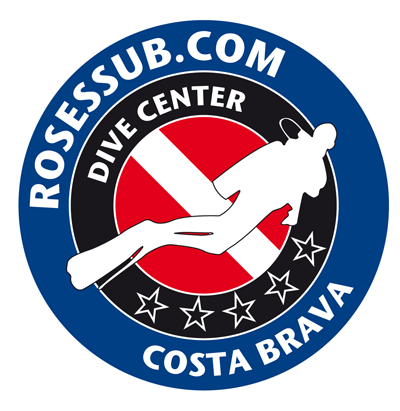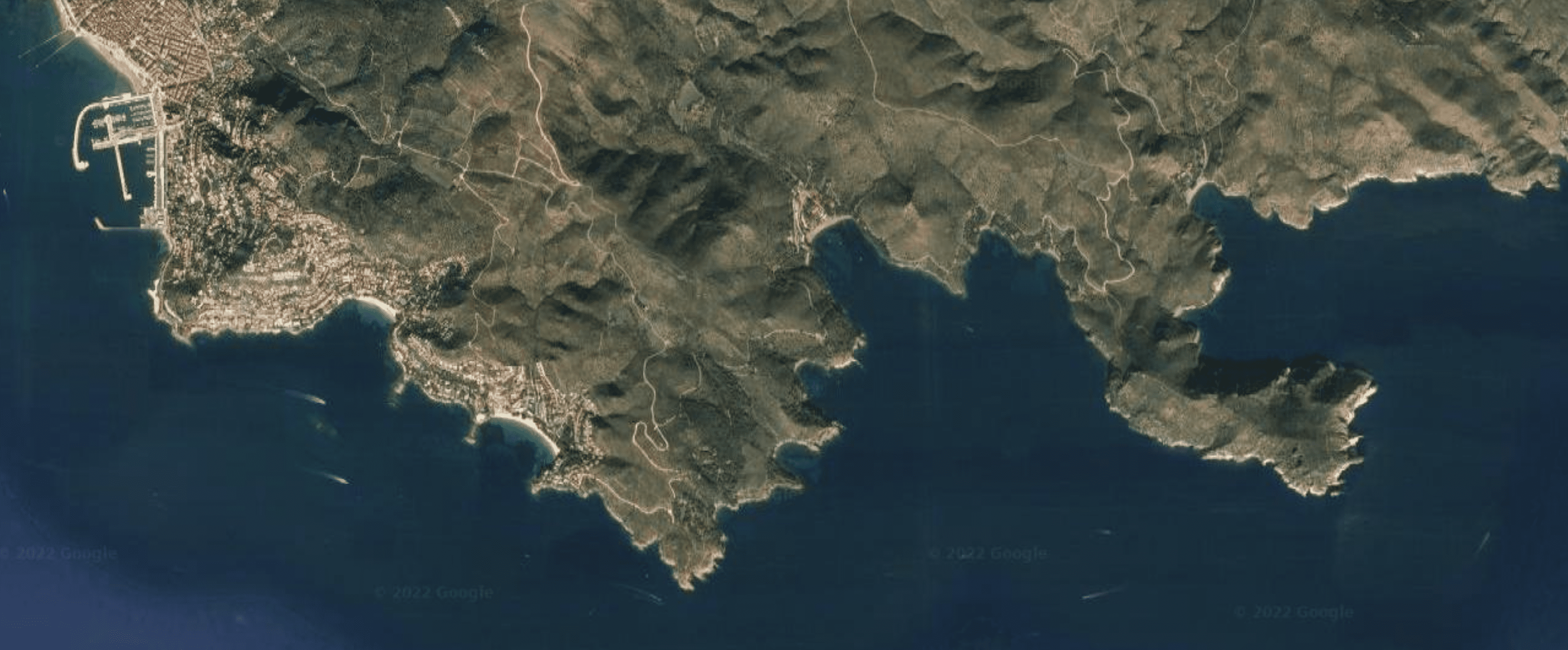Best diving spots in the Cap de Creus Natural Park
Punta Falconera
Immersion along a wall, between 15 and 22 meters, and up to 45 meters right at Punta Falconera. Between 10 and 20 meters, fixed fauna on the wall, 2 small caves, a sunken canyon at 12 meters, from the time of Napoleon. Between 30 and 45 meters there is a great wealth of fixed fauna and numerous lobsters. Little current.
Accessible at any level.
El Lladó
Low, in the middle of a small bay with a depth of between 5 and 30 meters. Fixed Fauna, interesting all around the low bottom of rock and sand. Site protected from wind and currents.
Accessible at any level.
El Bau de Cap Trencat
Located 200 meters from the coast, it is one of the most beautiful dives in the Cala Montjoi area. With a bottom that varies between 12 and 30 meters, where we find diverse landscapes, alternating numerous shallows with coral and rock bottoms. The fixed fauna is exceptional, sponges, gorgonian walls, coral…numerous fish, groupers, dentex, gilthead bream make for a pleasant dive. Somewhat exposed to winds and currents.
Accessible at any level.
La Rostella
Immersion intended for beginners and courses. Varied dive along the coast between rocks and posidonia field. Site protected from wind and currents, with a depth between 5 and 20 meters.
Accessible at any level.
El Bau de la Ferrera
It is a shoal along 150 meters, with a depth of 1 meter at its highest point and about 30 meters at its deepest.
The dive is essentially done in the zone between 12 to 25 meters. Abundant fauna fixed on its walls. Immersion without current.
Accessible at any level.
Punta del Traire
Located on Cape Norfeu, along its coast, it has several routes depending on the level of the diver. A bottom of rocks and sand from 12 to 28 meters, with numerous species of fish (groupers, breams, dentex, moray eels,…) as well as numerous octopuses.
El Bisbe
The return of the dive, back to the boat, is done along the wall at a depth of a dozen meters full of color with coral and sponges. A wall that goes from 28 meters to 45 and ends in a sandy bottom that has an extraordinary fixed fauna and numerous species of fish.
Current: Occasionally.
Accessible at any level.
El Gat, Cap Norfeu
The most appreciated and well-known dive in the south of the Natural Park. Located at the tip of Cabo Norfeu, it is a very rich place in both fixed fauna and fish. The bottom begins at the foot of a rocky wall at a depth of ten meters and descends to the foot of a bass at about 25 meters. Two shallows, one ranging from 12 meters to 40 meters, the other from 8 to 45 meters, are covered with red Gorgonian and end in a sandy bottom. Exceptional dive with often current, sometimes strong.
Accessible at any level.
La Fumada
Following El Gat, this dive takes place along a slope about 150 meters long, with a depth of up to 45 meters. A wall of gorgonians… The return of the dive is made between large rocks that rise to the surface, finding numerous groupers.
Depth: 0 to 45 meters (length of the wall from 25 to 45 meters). Immersion with frequent current.
Accessible at any level.
El Salt del Boc
In the bay of Joncols, another wall with a slope of between 5 and 20 meters, with a bottom of rocks of different sizes, where the groupers hide, a group of dentex that increases year after year.
The name of this dive comes from a large canyon about 40 meters long that goes into the mountain with a depth of between 12 and 20 meters. No currents.
Accessible at any level.
Cova del Pelegrí
Zona Cadaqués
En la bahía de Joncols, otra pared con pendiente de entre 5 y 20 metros, con un fondo de rocas de distintos tamaños, donde se esconden los meros, un grupo de dentones que aumenta año tras año.
El nombre de esta inmersión viene de un gran cañón de unos 40 metros de largo adentrándose en la montaña con una profundidad de entre 12 a 20 metros. Sin corrientes.
Accesible a cualquier nivel.
Illa Messina
Zona Cadaqués
En la bahía de Joncols, otra pared con pendiente de entre 5 y 20 metros, con un fondo de rocas de distintos tamaños, donde se esconden los meros, un grupo de dentones que aumenta año tras año.
El nombre de esta inmersión viene de un gran cañón de unos 40 metros de largo adentrándose en la montaña con una profundidad de entre 12 a 20 metros. Sin corrientes.
Accesible a cualquier nivel.
Massa d'Ors
Zona Cadaqués
En la bahía de Joncols, otra pared con pendiente de entre 5 y 20 metros, con un fondo de rocas de distintos tamaños, donde se esconden los meros, un grupo de dentones que aumenta año tras año.
El nombre de esta inmersión viene de un gran cañón de unos 40 metros de largo adentrándose en la montaña con una profundidad de entre 12 a 20 metros. Sin corrientes.
Accesible a cualquier nivel.
Cala Viuda
Zona L'Escala
En la bahía de Joncols, otra pared con pendiente de entre 5 y 20 metros, con un fondo de rocas de distintos tamaños, donde se esconden los meros, un grupo de dentones que aumenta año tras año.
El nombre de esta inmersión viene de un gran cañón de unos 40 metros de largo adentrándose en la montaña con una profundidad de entre 12 a 20 metros. Sin corrientes.
Accesible a cualquier nivel.
Reggio Messina
Zona L'Escala
En la bahía de Joncols, otra pared con pendiente de entre 5 y 20 metros, con un fondo de rocas de distintos tamaños, donde se esconden los meros, un grupo de dentones que aumenta año tras año.
El nombre de esta inmersión viene de un gran cañón de unos 40 metros de largo adentrándose en la montaña con una profundidad de entre 12 a 20 metros. Sin corrientes.
Accesible a cualquier nivel.

